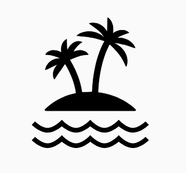An Introduction to Y10 I&S
Approaches to Learning:
- - Enhance and practice collaboration, organization, thinking, communication and presentation skills.
- - Apply critical thinking skills to a simulated scenario.
Scenario
. You and your classmates are selected to take part in a reality TV show called ‘Castaway’. Your class is put through a virtual reality plane crash to simulate you crashing into the ocean and then being washed up on the beach of an island.
In the scenario it is an isolated island with no chance of contacting the outside world, being rescued, or journeying to help. You also have only what you would carry onto a plane and anything not waterproof is destroyed (electronics are un-useable) You are truly castaway so have to plan to survive not only initially but for the longer term future.
In the scenario it is an isolated island with no chance of contacting the outside world, being rescued, or journeying to help. You also have only what you would carry onto a plane and anything not waterproof is destroyed (electronics are un-useable) You are truly castaway so have to plan to survive not only initially but for the longer term future.
The simulated crash
Your Location

For the purpose of this scenario you are Castaway on the Thai island of Mu Ko Surin in the Andaman sea. In reality Ko Surin is a Thai national park but for the purpose of the scenario the island you are on is uninhabited and has no buildings or relics of human settlement. Ko Surin has 2 main islands and the other island is inhabited by indigenous people who look aggressive and you are afraid to contact or interact with.
Google map of Ko Surin
Ko Surin island features

Ko Surin landscape & wildlife images
Your Castaway parameters
- Your group and 20 other NIST students survived.
- You are on a small archipelago with two main islands. You know the lay of the land, but you do not know where the islands are relative to the rest of the world or the mainland.
- The islands are very isolated…you can’t leave & you have no means of communication with the outside world.
- You salvaged nothing from the plane.
- The island is heavily forested and also have mangrove forests..
- There are birds and reptiles on the island…but no large animals.
- Coral reefs around the islands are rich in marine life.
- The beaches of the islands have plastic and other waste that has been carried there by ocean currents. (see images below)
- There are indigenous people living on the main island- they speak a different language and appear hostile.
- Their boats are too small for the distance you would need to escape the islands.
Your Task:

Come up with a survive / thrive plan needs to address the 3 following questions:
1. What do you need to survive?
2. What will you need to do to survive?
3. How will your decisions impact sustainability?
1. What do you need to survive?
2. What will you need to do to survive?
3. How will your decisions impact sustainability?
Your task is not just to survive but to lay the foundation for a sustainable future. But can
you?
|
|
|
